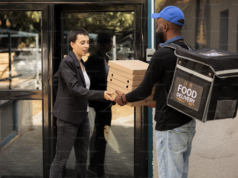
Agriculture is the bedrock of any economy’s sustainability. It is the largest source of livelihood for about 58% of India’s population.
As per UN projections, the global population will increase from 7.5 billion to 9.7 billion in 2050. This means that there will be more pressure on land as there will be only an extra 4% of the land, which will come under cultivation by 2050.
On the other hand, the Indian food industry is poised for huge growth as the total agricultural and allied products exports stood at US$ 41.25 billion in FY21.
This is driving farmers and aggrotech companies to find newer ways to increase production and reduce agricultural waste. But the sector is facing numerous challenges in order to maximize its yield including improper soil treatment, water shortage and pest infestation, among others.
Many farmers in India are aging and very few youths choose agriculture as the mainstay occupation. We must think about how to maximize the gains of AI for society and our environment at large.
As Industrial Revolution 4.0 gathers pace, technology is becoming increasingly connected. Its direct and indirect applications for the environment have led to the merging of digital and biological realms.
Can technology help in ensuring increased agricultural productivity?
With the gains and new solutions AI creates for nations and businesses, it is now possible to tackle some of the world’s agricultural problems.
In the past, agricultural activities were limited to food and crop production. But in the modern world, it has evolved to processing, production, marketing, and distribution of crops and livestock products.
Agriculture entails plenty of choices and uncertainties. AI, along with other emerging technologies including IoT, big data analytics, robotics, sensors, cameras and drones, work together to provide flexibility, high performance, accuracy, faster go-to-market for crops and cost-effectiveness to farmers.
India’s climate varies from humid and dry tropical in the south to temperate alpine in the northern stretch and has a great diversity of ecosystems. Seasonal forecasting is particularly valuable for small farms in our country as their data and knowledge are limited.
From soil and crop monitoring to tackling labor challenges to maximizing profits, AI is becoming an integral part of making farming sustainable.
On a daily basis, farms produce a variety of data points on weather conditions, temperature and usage of water. With the help of AI and ML models, the huge piles of collected data are leveraged in real-time to optimize yield mapping and crop planning by determining the crop and seed choices and later, choosing the right time to sow seeds for generating more yields.
With the predicted output yield, AI forecasts prices for the upcoming weeks that will help farmers obtain maximum profits. Understanding yield rates and quality levels of crops assist farmers, agro-companies and co-ops negotiate for the best possible price for their harvests or eliminate middlemen. This, thus, makes the supply chain more affordable.
Is smart farming sustainable?
Soil is a critical part of good yield and is the original source of the nutrients used to grow crops. AI and ML-based surveillance systems provide insights to monitor the crops, diagnose pests and soil defects so that farmers know the right time to sow seeds for maximum productivity.
Weeds are a major threat to all agricultural activities. They reduce farm productivity, invade crops, smother pastures and in some cases, harm livestock. AI sensors can detect weed-affected areas and can precisely decide which herbicide to apply within the region. Furthermore, with the use of AI and computer vision, robots can eliminate the volume of the chemicals normally sprayed on crops.
Many agro and agrotech companies are working on improving agricultural efficiencies with machines that use sensor fusion and AI models to identify the best location of the harvestable produce and help pick the right ones.
The rapid advances in video analytics fueled by AI and ML algorithms help in securing remote facilities – both fields and yields. For instance, using a combination of infrared camera data from drones combined with sensors on fields can monitor plants’ health levels.
Tackling the water shortage
Conserving water is becoming increasingly vital as the world’s population grows and drought conditions become more widespread and impactful. Agriculture has been both, a major cause and casualty of water scarcity. But now, AI can help farmers with irrigation management by locating irrigation leaks and measuring the effectiveness of crop irrigation approaches. Using water efficiently can significantly impact farmers’ profits and contribute to the global mission to preserve water.
Monitoring livestock’s health
AI and CCTVs enable farmers to observe and monitor the food intake and activity levels of livestock sitting at remote locations. Real-time health insights also allow them to quickly address injuries and separate the infected livestock from healthy animals.
Tackling the labor challenge
Traditionally, the agriculture sector has been employing a large number of seasonal workers to harvest crops and maintain farms. During the present transition from an agrarian society to an urban society, the best solution to prevent a shortage of labor is the usage of AI powered agriculture bots. These AI bots can assist the farmers in managing multiple tasks as they work at a faster pace than humans in eliminating weeds and harvesting crops. With the help of AI Bots, we will still be able to meet the world’s food needs with fewer workers in the future.
Conclusion
India’s agriculture sector is witnessing better momentum due to increased investment in agricultural and IT infrastructures.
As AI improves the recipe for each crop, it will accelerate further the knowledge that farmers have always had. It is undoubtedly true that, AI works in alignment with sustainable farming principles. Being efficient in using it can mean the difference between a farm or agricultural operation staying profitable or not. To boost farmer incomes and the sustainability of the agricultural economy, it is the need of the hour to address the knowledge gap between farmers and technology.




